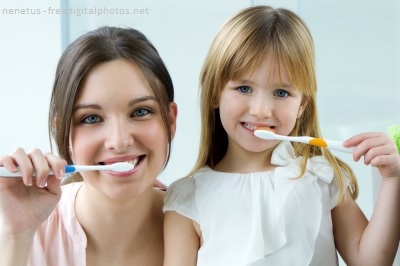
Child Oral Health – a hidden crisis
The British Dental Journal Team has said that woeful children’s dental decay statistics are making headlines in the UK, and have suggested that the quickest way to address this could be influencing their parents and carers.
We asked the Australian Dental Association what factors are at play for children’s oral health closer to home and have a statement from Professor David Manton, Deputy Chair of the Australian Dental Association’s Oral Health Committee.
“The maintenance of oral health is a lifelong task, which many find a challenge. Up until now we have viewed ‘prevention of disease’ as a primary focus of oral health care, as though the development of disease such as dental caries or periodontal disease is inevitable – a new paradigm should be accepted – maintenance of oral health – and this should start with pregnant mothers. Children are born with good oral health, and with correct information and access to care when required, this should continue throughout life.
One factor that has been found to be important in Australian research is the importance of the mother having good oral health. A study in Queensland found that if the mother had an unfilled ‘hole or holes’ in her teeth, then her child was nearly 6 times more likely to get decay before the age of 3 years.
Knowledge about appropriate feeding habits for infants and children is the starting point. This is followed by cleaning teeth which has a lot of uncertainties for many parents – when do we start, which brush to use, when do we start using toothpaste? Mouth cleaning can start before the primary (baby) teeth erupt using a face washer or specific brush made for children without teeth – this gets the child used to having something clean their mouth. Once the teeth erupt, the use of a toothbrush with a small head should start – the use of a child strength toothpaste should wait until around 17 months of age according to the Australian guidelines, however if your dentist suggests using an adult strength paste due to your child having increased risk of getting decay, then this is ok. Only a small amount (pea size) of paste should be used, and your child encouraged to spit the paste out after brushing.
Also, when should I take my child to the dentist? The Australasian Academy of Paediatric Dentistry recommends that a ‘dental home’ should be established by the age of one year – this allows the dentist to provide information about maintaining healthy teeth, and also detect early stages of decay before it becomes a hole. This early stage of decay can be healed if the risk factors are stopped.
Often parents are unaware of what causes tooth decay in children – primarily it is caused by a diet high in sugars – these can come from many sources, not only processed foods, but also items such as dried fruit, flavoured milk, tomato sauce, honey, and of course soft drinks. The more times during the day sugary foods or drinks are eaten, the greater the risk of getting decay – so snacking on sugary foods is dangerous for teeth. The WHO has recommended that sugars should contribute less than 10% of our daily energy intake – and following these guidelines will help reduce decay as well as obesity. The idea of a sugar tax has been accepted in several countries now, and some evidence exists that it decreases consumption – revenue from a tax such as this should be targeted towards treating the health consequences of sugar consumption. There needs to be more discussion of a sugar tax in Australia, as diet is still the major causative factor for decay.
In young children, ‘on demand’ feeding increases the risk of decay, especially over-night, so this should be avoided. The only dentally safe products for feeding bottles is water and milk/formula, and the child should finish the bottle and have it removed, not left in bed with the child.
Even in a well-educated wealthy country like Australia, around 50% of 6 year olds have evidence of caries – most of it untreated. Dental care is one of the major reasons children have general anaesthetics, so there is a huge cost to society, as well as the risks associated with anaesthesia.
Around one out of five children will suffer from the Impact of developmental defects of their teeth – these are mostly caused by the formation process of the teeth being upset by illness during the last trimester of pregnancy and the first year or two of life. There are also genetic conditions such as amelogenesis imperfecta that can affect the teeth during development. An early visit to the dentist can mean that these defects, if present, are detected early and care provided that will limit the long term affects, such as the tooth breaking down or getting decay.
References
• Australasian Academy of Paediatric Dentistry, http://aapd.org.au/en/the-dental-home
• K.A. Plonka, M.L. Pukalus, A.G. Barnett, T.F. Holcombe, L.J. Walsh, W.K. Seow, ‘A longitudinal case-control study of caries development from birth to 36 months’, Caries Res, 2013, 47: 117-127.
• FDI World Dental Federation, The Challenge of Global Disease – A call for global action, 2015.”
More articles on My Health Career:
